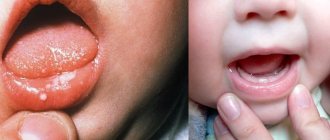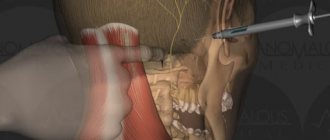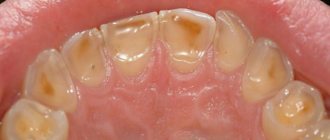What is acetone?
Acetonemic vomiting syndrome (acetone) in children, also known as ketotic hypoglycemia (CH) in childhood, is not a disease, but a metabolic disorder that can begin from 18 months to 5 years, and goes away by itself by 8-9 years of age. It is important to understand that during any illness, stress, or physical activity, the child must be given water, not limit sweets, and be given glucose in solutions and tablets.
With this disorder, the level of ketone bodies (this includes acetone) in the blood, urine and exhaled air increases, and the level of glucose in the blood decreases. The body tries to get rid of excess acetone and removes it through urine and exhaled air. This happens if a child goes hungry for a long time or the body consumes a lot of energy, then blood glucose drops and glycogen reserves are depleted. Since these ketone bodies are an alternative source of energy, when glucose levels are low, they begin to be produced in large quantities, which leads to intoxication of the body, and this, in turn, leads to nausea and vomiting. If normally ketones are detected only in trace amounts, then with this syndrome their amount increases by 50-80 times.
Why do children get acetone?
There is a mechanism for the occurrence of vomiting that is specific to childhood. Let's try to superficially explain its essence. So, the human body receives energy mainly from glucose. Glucose accumulates in the body, primarily in the liver, in the form of a special substance - glycogen. In adults, glycogen reserves are huge, in children they are insignificant. With physical exertion, emotional stress, high body temperature, i.e., with any phenomenon that requires significant energy expenditure from the child’s body, a situation may arise when glycogen reserves run out.
What we have as a result: there is no more glycogen, but energy is still very much needed. As a result, the body begins to receive energy from fat reserves. Intensive breakdown of fat is accompanied by the formation of acetone, which is excreted in the urine (i.e., acetone appears in the urine, which can be determined using special test strips). If there is a deficiency of fluid, acetone accumulates in the blood, irritating the mucous membranes of the gastrointestinal tract and the vomiting center in the brain. Vomiting and abdominal pain occurs. The described situation even received a special name - acetonemic state, and the vomiting that accompanies this condition is called, accordingly, acetonemic vomiting.
Whether a child develops an acetonemic state or not is determined by individual metabolic characteristics: glycogen reserves, the intensity of fat breakdown, and the ability of the kidneys to excrete acetone. Therefore, there are children in whom acetone never accumulates, even at a very high temperature and in a very serious condition, and there are those in whom an acetonemic state occurs in almost any illness - it’s just some kind of punishment.
Study of urinary ketone bodies
Ketone bodies can be detected using urine strip testing. You need to donate mid-stream morning urine, when the first portion of urine goes into the toilet, the middle part goes into a specially prepared sterile container, and the last part goes back into the toilet.
Urine analysis testing
Before collecting urine, you need to wash yourself. During the period leading up to the urinalysis, do not change your diet or do too much exercise.
A normal urine body test for ketones is negative. If ketone bodies are detected in the urine, treatment should be started immediately.
Symptoms
How to understand that a child has a tendency to an acetonemic state? After stress, physical and emotional stress, or during illness, the child develops the following signs:
- breath smells like acetone or rotten apples
- suddenly there was a pain in the stomach
- vomit
- weakness or even diarrhea
- the child constantly wants to sleep
This means the body needs glucose. The main thing is to give glucose and water in time, then vomiting can be avoided.
Physical properties and characteristics
The colorless liquid dissolves potassium and calcium salts, rubber, fats, combines with water, in accordance with GOST contains 99.5% acetone, 0.15 methyl alcohol. The density of organic matter ranges from 0.78.9 to 79.1 g/cu. see Dimethyl ketone has the following thermodynamic characteristics:
| Index | Unit | Meaning |
| Standard heat capacity | J/mol: K(f) | 125 |
| Surface tension at 20°C | mN/m | 23,7 |
| Critical Density | g/cm 3. | 2,273 |
| Ultimate pressure | MPa | 40,7 |
| Heat of combustion | kJ/mol | 1829,4 |
| Melting temperature | degrees | -95 |
| Boiling point | °C | +56,1 |
| Ionization energy | eV | 9,69 |
| Molar mass | g/mol | 58,08 |
In its normal state, acetone, the rational formula of which is denoted as CH3 – C(O) – CH3, is a colorless liquid with a dynamic viscosity of 0.36 (at 10°C), at 41 degrees Celsius – 0.28.
The enthalpy of formation of dimethyl ketone, measured in kilojoules/mol, is -247.7, and of melting -5.69. In air, propane-2-one ignites at 465°, the flash point reaches -20. When acetone evaporates, a cloud appears that spreads a considerable distance from the place of fire or heating.
Acetone vapor irritates the conjunctiva of the eyes and is absorbed through inhalation through the skin, causing symptoms of dermatitis with prolonged contact. Dimethyl ketone has a negative effect on the digestive organs, liver, quickly pollutes the air, when sprayed, evaporates at +20. When in contact with peroxide, nitric and acetic acid, acetone, which is classified as flammability class III, forms explosive compounds; when interacting with chloroform, it provokes a fire.
The refractive index of propanone at 20° is 1.359, at 25 –1.3588
Acetone is purchased for storing acetylene, used in welding and cutting metals; the flammable gas is kept in a porous container impregnated with dimethyl ketone. One liter of volatile agent is capable of dissolving 250 g of unsaturated hydrocarbon.
What to do?
Do not panic! Responsibility for the condition of the child lies only with you!
So, the child is nervous, hungry, and has a smell of acetone on his breath - give him a sweet drink, give him some sweets. Coca-Cola is best, because this drink has a lot of sugar and the child will drink it with great pleasure. This category also includes various sweet lemonades and sodas.
Do not put your child on a diet, especially a hungry one, especially one without sweets. This can make the situation worse. Don't limit your child's sweets! It is necessary to ensure that the distance between meals for the child is at least 4 hours.
It is also important to remember that stress in a state of acetonymia is contraindicated, just like a sharp increase in physical activity. You should always carry 40% glucose and candy with you.
If you doubt that your child has acetone, buy special test strips to determine it in urine. These are paper strips with a reagent that changes color depending on the acetone content in the urine.
If the child’s condition is more severe, then it is necessary to start giving him a sweet drink; in this case, saline solutions will only help against dehydration, but will not affect his well-being. But you can give a saline solution in parallel with sweets.
Sometimes it happens that if there is severe vomiting, it is impossible to give the child a sweet drink. In this case, glucose is administered intravenously or an injection of an antiemetic is given, and while it is working, this is about 2-3 hours, you need to let the child drink as much sweet liquid as possible.
If the condition does not improve, vomiting does not stop, and signs of dehydration appear, call an ambulance, as in this case infusion therapy is needed. As soon as the acetone crisis has passed, you just need to forget about it. Do not torment your child with diets, do not look for reasons, but simply live and do not forbid your child sweets, because in 100% of cases children outgrow this condition.
The main thing is to know how to provide first aid and not to scare the child with hospitalization. Of course, there are situations when a hospital cannot be avoided, for example, when intoxication and dehydration of the body are too severe, then the introduction of glucose through a vein is inevitable, but such conditions are very rare and most often we can cope at home ourselves.
It is worth remembering that this condition can develop in an absolutely healthy child, and acetone syndrome without other signs most often does not mean the presence of diabetes. But if acetone appears in a child often for no reason and is accompanied by sudden weight loss, the child often urinates and is constantly thirsty, then it is worth checking for type 1 diabetes.
Preparing a saline solution for dehydration
A treatment method aimed at introducing fluid into the body is called rehydration therapy. Rehydration is, in fact, the replenishment of fluid losses. There are two main methods of rehydration - intravenous, when the necessary solutions are injected into a vein through a dropper, and oral - when a person receives the necessary solutions through the mouth.
What it is? Sometimes it is a ready-made solution, but usually it is a powder, or tablet, or granules, which contain the sodium, potassium, chlorine and other substances necessary for the body in specially selected combinations and concentrations equivalent to pathological losses. Let me explain: sweating is a loss of not only fluid, but also sodium and chlorine (after all, sweat is salty, and everyone probably remembers the school formula NaCl). If you replenish fluid losses, but do not replenish salt losses, this is fraught with serious problems. How much salt do you still need? So smart scientists calculated the optimal amount of salts for a certain volume of water.
The formulas for rehydrating agents are based on these calculations. In addition to salts, the preparations often contain glucose; sometimes extracts of medicinal plants (chamomile extract, for example), and decoctions of cereals (rice, wheat, etc.) are added.
Oral rehydrating agents are an ideal option for quickly and effectively replenishing physiological and pathological fluid losses.
This is why oral rehydration products are over-the-counter medications.
That is why oral rehydration products should be an essential component of a home first aid kit.
History of discovery
A carbon compound from the ketone group was obtained at the end of the 16th century by heating zinc acetate without access to oxygen by the German chemist Andreas Liebaville. They described the properties, determined the nature of the substance, and assigned acetone the systematic name propan-2-one in 1832, scientists Justus von Liebig and Dumas Jean- Batiste. The official term Aceton was introduced by the German professor Leopold Gmelin 16 years later.
For a long period, acetone was obtained by dry distillation of wood, and new methods for the production of dimethyl ketone began to be used during World War I, when the need for tear gases sharply increased.
Prevention
- To prevent CG, high-carbohydrate (bread, cereals, rice, pasta, corn tortillas) and high-protein foods (red meat, chicken and turkey, fish, beans, eggs, nuts) are recommended. Do not allow your child to take long breaks from eating (maximum 6 hours); It is advisable that the child has at least 5 meals a day. A snack before bed is a must (milk, bun, cereal, bananas)!
- In case of an acute infectious disease, fever, nausea, vomiting, or loss of appetite, you should immediately begin giving the child sweet drinks (juices, lemonades, sweet tea, Coca-Cola). It is not necessary and useless to try to feed a child with CG only Borjomi/Narzan/Essentuki/saline solutions: they can prevent dehydration, but without sweet drinks it will not be possible to get the child out of CG, so saline solutions are only an additional measure to sweet drinks.
- If you are constantly vomiting and cannot replace fluid loss at home, you should immediately seek help from a doctor. Only if home drinking does not produce an effect, you should drip solutions intravenously - this method of treatment should not be used as a basic one.
What exactly CG is not:
- CH is not a disease, but only a violation of the tolerance to prolonged fasting
- CG is not a “neuroarthritic diathesis” (there is no such disease). CG is a real problem, “neuro-arthritic diathesis” is a mythical animal, therefore, these two things are not related. What does not exist should not be treated.
- CG does not lead to diabetes and is in no way associated with it.
- CH is not and never has been a “disorder of purine metabolism.” If someone claims the opposite, he does not understand either the metabolism of purines, or the metabolism of carbohydrates, or metabolism in general. CG is not a disorder of uric acid metabolism and is not associated with gout. A restrictive diet is not indicated, it is dangerous and harmful for CG, and people who recommend that children with CG avoid meat and carbohydrates have absolutely no understanding of this condition.
- “Gall bladder bend” is a variant of the normal structure of the gallbladder, and it is very common; this feature is in no way related to CG. By the way, if you have an excess of gallstones, you don’t need a diet either.
- KG is not a kidney disease.
- CG is not a liver disease.
So, the acetonemic state/ketotic hypoglycemia is not a disease, but a metabolic feature that requires the parent not to torment the child with diets and endless searches for the cause, but attention, so as not to miss and prevent the onset of a crisis. Timely drinking and a “sweet diet” will allow the child to safely outgrow this condition.
Normalization methods
Acetone, which appears in diabetes, can be removed by saturating the human body with the correct glucose. To do this, just eat something sweet.
It is possible to remove acetone from the body by drinking a significant amount of liquid. However, it is difficult to do this on your own due to the repeated vomiting that accompanies the condition.
Sweetened tea, fruit juice or compote will help rid the body of acetone without causing vomiting. This drink should be given a teaspoon every few minutes.
Fruit juice will help rid the body of acetone without causing vomiting
It is also possible to get rid of acetone with the help of a proper diet, which will be based on the consumption of light carbohydrates: semolina or oatmeal, mashed potatoes, vegetable broth, etc.
Diet requirements:
- Meat can only be dietary: rabbit, turkey, veal. It is recommended to stew, boil, bake;
- fish should be lean (for example, hake, pollock);
- vegetables and fruits will help restore water balance. Quince is useful for acetonuria; compote or jam is made from it. The consumption of citrus fruits and bananas is not recommended.
Products that help normalize the condition - gallery
Fruits Vegetables Pollock cooked in the oven Rabbit meat Boiled turkey
To remove ketone particles in diabetes, cleansing enemas are given. In especially severe cases, acetone can only be eliminated during hospitalization.
It is possible to prescribe medications that prevent dehydration. For this purpose, a solution called Regidron or its analogues, which can normalize water-salt metabolism, is suitable. Additionally, a glucose solution with a concentration of 5% can be used. Enterosorbents are also shown, including Smecta, Enterosgel, Filtrum, etc.
Chemical properties
Among all representatives of the group of saturated ketones, acetone has the greatest ability to react. Dimethyl ketone, with the chemical formula C3H6O, is found in industrial solvents, but evaporates faster and more easily than such products.
During thermal decomposition, which occurs at temperatures exceeding 700°, acetone is converted into colorless gases in the form of methane and ketene.
(CHЗ) 2 CO → CH2 =С=O+CH4
When interacting with hydrogen cyanide, dimethyl ketone forms acetone cyanohydride, an acid-degradable product that is used as a raw material for acrylic, as well as in the production of:
- medical supplies;
- insecticides;
- perfumes.
In an alkaline environment, acetone enters into a chemical reaction of aldol self-condensation, which produces a solvent with the properties of an alcohol and a ketone. To add shine and form a protective film, propan-2-one is added to paints and varnishes that are produced on the basis of cellulose ether.
Acetone forms crystalline substances that dissolve in acids and metal alkalis and decompose into aldehydes and ketones.
(CH3) 2 CO +NAHSO3→ (CH3)2 C (OH) SO3Na
Under the influence of chlorine, dimethyl ketone, in which hydrogen atoms are replaced by halogens, is converted to trichloromethane. In an alkaline environment, iodine converts acetone into yellow crystalline triiodomethane powder, which is used to disinfect purulent wounds, disinfect erosions, and ulcers.
Cleaning Features
Technical acetone contains water and other components, and in accordance with GOST, a product with impurities of up to 0.1% is suitable for sale. To determine the presence of reducing agents, liquid potassium permanganate is dripped into 10 mm of dimethyl ketone. If after a quarter of an hour the mixture becomes lighter, this indicates that there are more additives than normal.
Potassium carbonate is used to dry technical acetone. The solution is heated well for several hours, cooled and again passed over fresh potash.
To obtain highly purified dimethyl ketone at 25 or 30°C, it is saturated with sodium iodide powder. The mixture is drained and cooled to 10 degrees to remove crystals, and passed through a filter. The salt is placed in a flask and heated. Acetone is sent to a distillation tank, where it is purified from the remaining distillate.
Application
The characteristics of dimethyl ketone and its affordable price make it possible to use the caustic agent in many areas of human activity.
In laboratory conditions
Acetone, which has low toxicity and dissolves well in water, is used to wash chemical dishes. Test tubes, flasks, and other containers are dried using dimethyl ketones. In the oxidation of alcohols in the process of introducing an alkyl substituent into the molecule, acetone plays the main role.
Dimethyl ketone is combined with liquid ammonia, dry ice and at 78° to create cooling baths.
In industry
The production of nitro paints and enamels cannot do without technical acetone, which is supplied to enterprises in tanks, bottles and barrels. The varnish, into which quickly evaporating propanone is poured, dries instantly, forms an elastic film and is supplied to shoe factories, aircraft manufacturing, and automobile corporations.
So far we have not been able to find anything to replace acetone in production:
- perfumery;
- medicines;
- textile products;
- films.
In the food industry, dimethyl ketone is used to create additives that improve the taste of baked goods and sweets, to isolate extracts, and to produce a number of fats. Acetone takes part in the synthesis of aromatic compounds added to eau de toilette, cologne, and perfume, and therefore is ordered by companies that produce perfumes.
To process nitrocellulose, from which viscose is made, to disinfect wool and fur, textile and clothing factories order acetone. Volatile propanone is included in the means used to dye fabrics, apply patterns, and print designs.
As an auxiliary component, acetone is present in painkillers; it is used by pharmaceutical companies to extract many extracts and basic extracts from plant materials, for the production of films that are applied to sutures and wounds.
Buy technical acetone from companies that produce:
- rubber;
- fiberglass;
- household goods.
A number of other industrial sectors cannot do without dimethyl ketone - in electronics, in the production of gunpowder, ink. They buy not just one liter of acetone, but tons from the enterprise where they make cigarettes.
At home
The product, which is cheaper than stain removers, removes traces of paint on bedspreads, carpets, clothes without affecting the structure, and cleans hardened silicone, dried glue, and wax. Instead of an expensive solvent, metal surfaces are degreased with acetone, ceramics are degreased before applying varnish, concrete and wood are treated before painting. To remove scuffs on tiles and laminate flooring, moisten a paper towel with the product and wipe gently. To get rid of coffee or tea stains, pour 2 teaspoons of solvent into a cup and clean the marks with a sponge.
Car owners add propanone to the gas tank, which helps improve engine performance. Use acetone to wipe away carbon deposits deposited on the spark plugs and on the surface of the injectors, and remove condensation. Since this product contains a high concentration of oxygen, fuel combustion improves and gasoline consumption is reduced.









